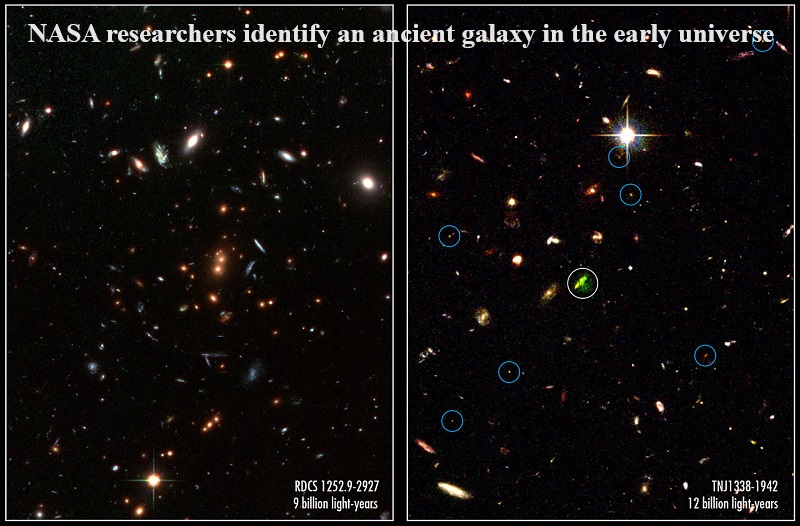
In a groundbreaking discovery, NASA researchers have detected an ancient galaxy in the early universe hosting a central black hole engaged in active feeding.
This black hole is remarkably massive, accounting for around half of the galaxy’s total mass.
This finding challenges existing theories concerning the formation of supermassive black holes and provides insights into the early stages of galactic evolution.
The research was conducted using data from the James Webb Space Telescope, which enabled scientists to identify some of the universe’s earliest galaxies.
These galaxies existed less than a billion years after the Big Bang, and researchers were particularly interested in whether supermassive black holes were present at that early stage.
X-ray clues To search for supermassive black holes, the team turned to the Chandra X-ray Observatory.
When supermassive black holes are actively feeding, they emit intense X-ray radiation. Among the 11 early galaxies identified, one stood out: UHZ1, magnified nearly fourfold by gravitational lensing.
The X-rays emitted from this galaxy were significantly higher than the background, indicating the presence of an active galactic nucleus powered by a supermassive black hole.
Understanding the Eddington Limit is crucial in comprehending these findings. The Eddington Limit determines the maximum rate at which a black hole can consume material from its surroundings.
This limit is governed by the energy loss as matter falls into the black hole, radiating energy that can prevent further accretion. It essentially restricts a black hole’s feeding rate.
By considering the energy emitted by the black hole in UHZ1, assuming it feeds at the Eddington Limit, researchers estimated a lower limit on its mass, which was found to be at least 107 times the mass of the Sun. This indicates that the black hole in UHZ1 constitutes around half of the galaxy’s total mass.
This discovery challenges existing theories about how supermassive black holes form. There have been two main hypotheses: one suggests that the first stars were exceptionally large and formed unusually large black holes, which grew rapidly through mergers and gas accretion. The alternative theory proposes that supermassive black holes formed very early in the universe through the direct collapse of dense gas clouds.
Calculations suggest that for the black hole in UHZ1 to reach its size through the direct collapse of a gas cloud, it would need to feed at the Eddington Limit for its entire history.
If it formed from a supernova, it would need to feed at twice the Eddington Limit. This underscores the remarkable nature of the UHZ1 black hole’s existence.

Post Your Comments